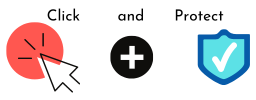Antivirus and firewalls – what is the difference between them?
In case this is a question you’ve never quite liked to ask, we thought we’d give you a quick description of each, and then some actions to take to make sure that these essential tools are in the best possible condition and ready for action.
Antivirus
Antivirus software is a program that protects your device against malware. It compares anything it thinks could be a threat to the list of threats it knows about, and if there’s a match, it will quarantine the file so it can’t attack your device.
Your antivirus software should run in the background, scanning files as you try to use them, and should alert you if there’s a problem.
It will need to be regularly updated so that it has the latest list of known threats to compare against.
Firewall
A firewall is slightly different: while the antivirus scans the files already on your computer, the firewall scans internet traffic (emails, messages, webpages…) for malware as it arrives from the internet, and before it gets to your computer—filtering out the undesirable traffic.
A firewall can be hardware or software (or both). A software firewall should be installed on every computer, and guards the ports (entrances) to your computer, while a hardware firewall would be installed between your network and the gateway, or entrance to your network.
There are various different kinds of firewalls, some with more functionality than others, and some filtering at different levels or layers.
Do I need both?
If your device connects to the internet, you need both types of scan, though you can buy one program that does both for a particular device (antivirus and software firewall).
There are free versions of both available, and your operating system (such as Windows) may come with both pre-installed. Whether this is enough protection will depend on your individual circumstances.
However, whether you’re using a paid or a free version, you do need to make sure that it is on, working and that it is configured correctly.
Getting started
Got 10 minutes today?
- Check that your main device has an antivirus program on it, that it is working, and that it is up-to-date. If it’s not up-to-date, take a few minutes to update it, and to set off a scan using the update.
- Check your firewall is activated too.
30 minutes?
- Review the results of the most recent scan, and follow the advice of your chosen program if it’s found a problem
- Make sure the antivirus software on that device will auto-update in the future
- Take 10 minutes to check another device
60 minutes or more?
- Make sure that the antivirus/firewall status of all devices in your office have been checked, and set them all to auto-update
- Are you using free antivirus software? If you are, review your options: it may be sensible to invest in a subscription to a paid service, and to ensure all your devices are covered by that same subscription. Having one ‘master’ subscription will save you time in the long run.
Want more?
We have a Guide to Malware that is available to download. And if you’d like advice or help on getting your cyber security match-fit, give us a call on 0113 733 7230 or fill out the form.





